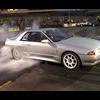Power Fc V's Microtech LTX-12
Announcements
-
Similar Content
-
Latest Posts
-
I did a skidpan night at SMSP this week, it was much cheaper than $350. But yeah, you need to slap an LSD in that thing. I put an OS Giken in the 370Z and it's f**king MARVELOUS even compared to Nissan's viscous LSD. So you're saying it's free now that it's a housing estate? 😂
-
Nah, the car seems to run exactly as it did prior, in saying this it does "seem" to be better down low, like more eager to rev, but that may be 100% placebo effect from intake noise But, I'm not worried about it at all, in the end it is a fairly low compression NA engine that has a well shrouded intake, if it is getting hotter IAT I cannot notice anything negative performance wise from the seat of my pants thrashing it about on the street or sitting in traffic, so meh, car now now makes induction noise so I'm happy
-
Do you have an IAT sensor? It's worth checking it to see. You may be suprised how little gap you actually need to flood your engine with hot air. (I tape up my airbox for a reason) :p
-
@KinkstaahKrinkle paint the "silver" alloy, not the red filter frame Engine bay heat won't be a issue worth worrying about as the silver alloy blocks it off on 3 sides, as for the top, the bonnet seals most of it and the big OEM CAI intake snorkel is still fitted in its original position I will head into Clark's Rubber when I have some time to grab some pinch weld to tidy up the alloy after I paint it As for performance, I honestly wasn't expecting any, the only reason I got it is because the intake noise sounds cool to my old ears when I'm feeding it the beans Sometimes it's the silly things you do in in life that gives the most fun, and I do love anything that makes cool car noises In other news: I survived 4 nights at sea with Jackie not throwing me over board, holidays are continuing now as we are currently chilling at the Beachcomber in Toukley, after taking the coast roads from Sydney in the MX5, top down all the way, Toukley is where I spent a good deal of my youth holidaying during the summer months, there's lots of reminiscing going on, and lots of beaches and old houses to visit Next on the list is to head to Batemans Bay for a few days, but we will take the Commodore out to stretch its legs, then Commodore hasn't really moved for months
-
There’s probably people who’d like to do it and then when it comes to putting their hands in their pockets they’ll all disappear into the shadows
-









Recommended Posts
Create an account or sign in to comment
You need to be a member in order to leave a comment
Create an account
Sign up for a new account in our community. It's easy!
Register a new accountSign in
Already have an account? Sign in here.
Sign In Now